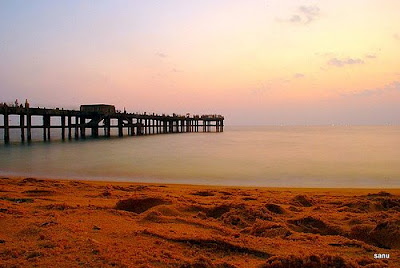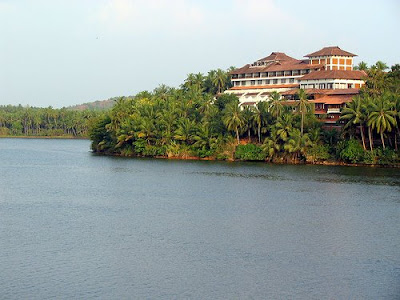Travelling is one of the best possible ways to people’s mind, body and soul residing in any part of the globe. Besides these, travelling allows one to know the culture, values and rules of an unexplored land. After vacationing in any new country or a destination you feel yourself refreshed and also carry some lifelong memories along with you. However, before visiting any strange land, one must have prior knowledge about the geography, rules and regulations etc. related to the particular country or place to avoid any unpleasant circumstance during the trip.
Fact is that, a tourist or common traveler need to know a number of things before flying to a new country or a distant place. India Travel Directory always take care of the international tourists visiting India from different parts of the world. Keeping in mind your hassle less journey we have compiled some important travel related requisites below that would be surely handy for you. Hence, before landing to the charming land of India, must keep yourself updated about the facts and essentials mentioned below:
- Travel Tips: Before visiting any new destination, it is very essential to know the do's and don't s or the general tips for travelling. One should enquire about some essentials such as the visa procedures, destinations to visit, the best time to visit and things one needs to carry. With the aim to make your trip a pleasant experience, we are providing some important tips related to your trip to India.
- Travel Advisory: Likewise Travel Tips one should also have a glance at the travel advisory. In fact, having a glance at the travel advisory would help you to make your journey to the India a memorable experience. Our Travel Advisory provides you information about - Safety & Security, Health Conditions, Political Conditions prevailing, Customs of the land, Sensitive areas and so on.
- Tourism Offices in India: Ministry of Tourism, Government of India has established a number of tourism offices all over the country. Tourism offices in India provide essential assistance to global tourists during their trip to India.
- Tourism Offices of India Abroad: With the aim to provide India related information to tourists across the world, Government of India has established its tourism offices in some major countries. Global tourists can get the answers of their India travel related queries in these offices.
- Tourism Boards in India: A vast country India is visited by millions of tourists every year from across the globe. With the aim to provide hassle free journey to tourists, all the states and union territories of India have set up Tourism Development Board. Get more information about Tourism Boards in India with ITOPC.
- Guidelines to Obtain Indian Visa: Obtaining the tourist visa before visiting to India is prerequisite. However, due to lack of knowledge global tourists often face a number of problems. For global tourists we provide all types of travel assistance and also guide to obtain the Indian Visa.
- Medical Visa: Indian Government offer Medical Visa to foreign national who desires to go for treatment under the Indian system of Medicines. Get the important information regarding the Medical Visa and plan your Medical tour accordingly.
- India Baggage Rules: Keeping in mind the hassle free tour of foreign tourists and commercial and economic interest of the nation, the Government of India has carved out certain baggage rules. Before visiting India one should know about the baggage rules of the country. For avoiding any type of unusual circumstances go through the India Baggage rules carefully and made your vacation pleasant.
- Domestic Airlines in India: For past few years the airlines industry of India has seen tremendous growth. Presently a number of airlines offer domestic flights across India. Boom in airlines industry has resulted in the several cheap airline carriers. Now one can travel to all the big cities of India by airline at cheap fare. Know more about the domestic airlines in India in detail.
- International Airlines in India: One of the most popular destinations of world, India is visited by large number of tourists from all over the world. Global trotters mostly use the airways to reach India, as it is the fastest and most convenient mode of transport. We provide you brief information about famous international airlines operating for India.
- Travel Insurance for India: Before visiting any new place one must assure all travel requirements and other concerned worries. Keeping in mind travel worries of thousands of tourists visiting India, government has made Travel Insurance policy. From business trip to family vacation, Travel insurance plan takes care of all your travel needs and worries.
- Road Transportation in India: Road Transportation in India is the main medium of transport in the country. In fact, almost every nook and corner of India is attached with roads that provides easy accessibility. With the aim to provide hassle free transport to people and essential assistance, government of India and State governments alike have set up road transport corporations.
- Train Travel in India: Train travel is the considered the most convenient mode of transport in India. Indian Railways is the third largest railway network of world and it provides train connectivity to all the important places of the country. Travel across India by train and experience one of the best journeys in your life.
- Bus Travel in India: Buses are the only mode of transport which can take you far flung areas, where you reach by train or air. Most of the places in India is well connected by good motorable roads, served by a number of buses. Buses in India are available in various options like ordinary (local), luxury, deluxe, coaches, volvo etc. In India both government as well as private operators offer bus services to different places.
- Renowned Hotel Chains in India: The boom in travel and tourism industry in recent time has also encouraged the major hotel groups of the country. Equipped with modern amenities, these hotels offer world class services to guests. Get more information about hotel chains in India.
- Handy Travel Books: Travel Books are one of the best medium to know about any place and its facts. You will find well compiled texts as well as photographs of various places in travel books. After going through the travel books you get an overview of particular place that makes your trip easier.
- Popular Newspapers of India: Newspapers are considered the convenient and authentic means of knowing about the happenings around the world. In India newspapers are published in various languages daily that keep people updated with news related to politics, events, crime, business, sports, entertainment, culture, opinions and much more.
- Latest Tourism Statistics: It becomes necessary sometimes to check the tourism statistics before planning a trip to a place. Tourism statistics helps the travellers to plan their accordingly. We at ITOPC provides you information about the inbound, outbound and domestic tourism statistics.
- National Parks/ Wildlife Sanctuaries Entrance Charges: All over India there are dozens of wildlife parks and you have to pay entrance charges to explore those wildlife areas. Know about the entrance charges of important wildlife sanctuaries and national parks of India.
- Monuments Entrance Charges: For proper maintenance of the ancient monuments the tourism department has fixed entry charges. You have to pay entry charges of few dollars to visit the historic structures known for their rich past, cultural or architectural importance.
- Amusement Parks Entrance Charges: Amusement Parks have been developed in major cities of India to provide complete entertainment. Charges of amusement parks ranges from Rs 100 to 500 and you would certainly enjoy every minute inside the parks.

















